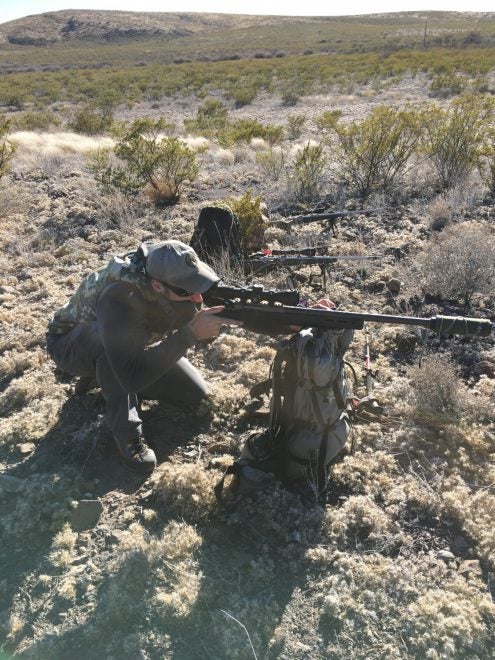This past January an opportunity fell in my lap to attend the first Precision Hunter Course held in Texas by Magpul. The Precision Hunter course is unique because it is geared toward the average hunter. In the words of the instructor, Caylen Wojcik, “The aim of the Precision Hunter course is to show hunters the capabilities and limitations of the equipment they plan to bring to the field, and employ it to its maximum potential.”
Magpul Core, formerly known as Magpul Dynamics, is a division of Magpul that delivers high end firearms training. Caylen Wojcik is Magpul Core’s Director of Training for Precision Rifle Operations. He is a veteran of the United States Marine Corps, and has held nearly every billet within a U.S. Marine Corps scout/sniper platoon. He also won the Oregon Sniper Challenge in 2013 against 49 other highly skilled competitors.
The site of the Precision Hunter Course was hosted on a beautiful ranch approximately one hour south of Marfa, Texas. During our stay we saw plenty of wild game including mule deer, javelina, aoudad, and quail.

Part of the ranch, you can see one of the hunting guides off to the left side.
The course itself is designed as a 16-hour, 2-day curriculum. Day 1 is to help each student build a DOPE chart for their rifle setup. A DOPE chart, which stands for “Data On Previous Engagement”, is a logbook with which a shooter records the many variables that go into each shot, including ammunition type, weather conditions, the setting of the scope, distance to target, etc. This data is often condensed into a single chart for quick reference, which will allow a shooter to make first round hits on targets while in the field. On Day 2 students practice and learn about dynamic shooting positions often found in hunting. Materials required for the course include 200 rounds of your hunting ammo of choice, in addition to your hunting rifle.
Having some grasp of the fundamentals is a prerequisite to getting the most out of the Precision Hunter Course. That being said, the ideal candidate for this course is someone who has had little to no professional shooting instruction, especially in long-range rifle shooting.
The rifle I brought to the course was my tried and true Browning A-Bolt chambered in .270 Winchester. It sports a 20 inch stainless steel thin profile barrel, a BOSS muzzle brake, and a black synthetic stock. Up top sits a 3.5-10 x 50mm Leupold scope in second focal plane, with a 2 MOA dot reticle on maximum magnification. Built to withstand miserable conditions, the Browning A-Bolt is a lightweight, rugged, and remarkably accurate hunting rifle.
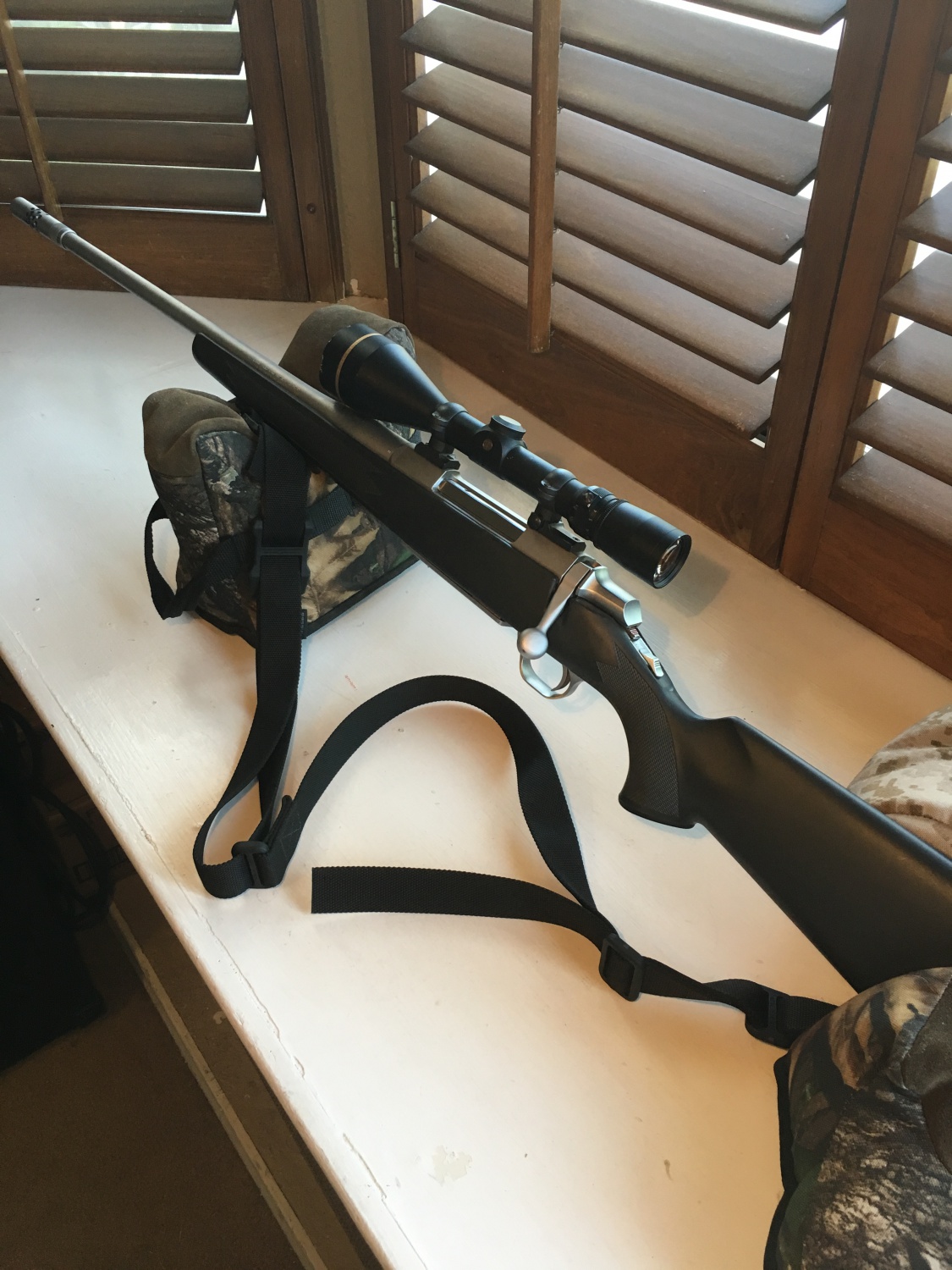
My trusty hunting rifle, the Browning A-Bolt.
On Day 1 of the course we were all awake early and were treated to breakfast by the owners of the ranch. By 8 a.m. we were given a brief overview of the course procedures and content to come. Once on the firing line I was lent a Harris bipod, and everyone was given two-point Magpul S1 slings to use during the course. Students also received a Magpul Dynamics Precision Rifle Data book. We were instructed how to use it and to record the details of every shot fired for the remainder of the day.
Other guns on the range included a Browning A-Bolt in a similar configuration to mine except it was chambered in .300 Win Mag, with a Nikon scope. There was also a Remington 700 in .308, with a 16 inch barrel and a Magpul stock, and a custom 6.5 Creedmoor in a McMillan stock with a 5-25x Schmidt and Bender. For demonstration purposes, Caylen was using a suppressed Remington 700 chambered in 6.5 Creedmoor, and a Magpul stock. It had a Proof Research carbon-wrapped barrel, a Leupold Mark 8, and was being fed by Hornady’s new ELD-X ammo.

Image of the 6.5 Creedmoor with Schmidt and Bender up top.
To start off we zeroed our rifles at 100 yards. After that we chronographed the velocity of our bullets using the very accurate magnetic method. Magnetic chronographs such as the Magneto Speed determine the velocity of bullets by using sensors to detect the disturbance between two magnetic fields. These sensors are more accurate than optical sensors because they are not affected by muzzle blast or fouling, so measurements may be taken much closer to the muzzle. Additionally, they are not affected by variable lighting conditions. Once we obtained the average of 5 rounds we input the relevant data into a ballistic calculator. Then we tested the theory of the ballistics by shooting at a variety of targets at predetermined ranges, such as 311 yards, 339 yards, 388 yards, all the way to 736 yards. While shooting we were dialing for elevation, so we were only holding off for windage on each shot.
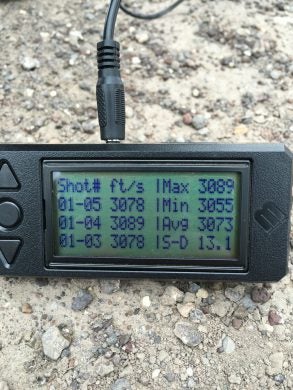
The chronograph for my 5 rounds of Hornady .270 Win 130gr. SST. A standard deviation of 13.1 ft/s.
Weather conditions were less than ideal on Day 1. It was 50 degrees Fairenheit with a 10-20 mile an hour wind blowing dust from our 7 o’ clock. At one point we were shooting in the rain and later hail, which was enough to muddy our rifles and optics to a despicable degree. By the end of Day 1 I was feeling slightly disappointed as I was only able to confirm ballistic data out to 500 yards, while other shooters were able to confirm out past 700. I think my imprecise reticle made holding off for windage just too challenging beyond 500 yards.
Spirits were raised when we returned to the lodge and quickly cleaned our rifles. After the guns were put away the beers were cracked and dinner was served. Due to the remoteness of the course location, all participants stayed together for the weekend. This allowed for everyone to get to know each other, and pick Caylen’s brain about all manner of ballistics and shooting theory.
Day 2 was about applying your data from the previous day in dynamic shooting positions, including sitting, kneeling, and standing. There was also instruction and tips in the use of the sling, bipod, shooting sticks, backpacks, as well as a tripod to maximize stability in each of these more challenging and realistic field shooting positions.
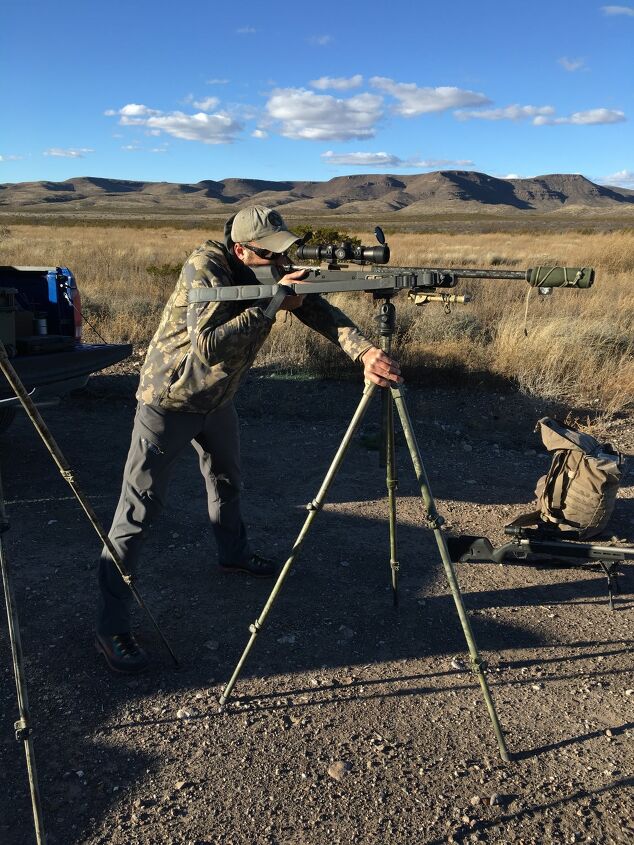
Caylen Wojcik demonstrating a standing tripod technique.
The weather was also much more pleasant on Day 2. My best shots for the day were 5 hits in a row on 12-inch diameter plate from the kneeling position at 505 yards.
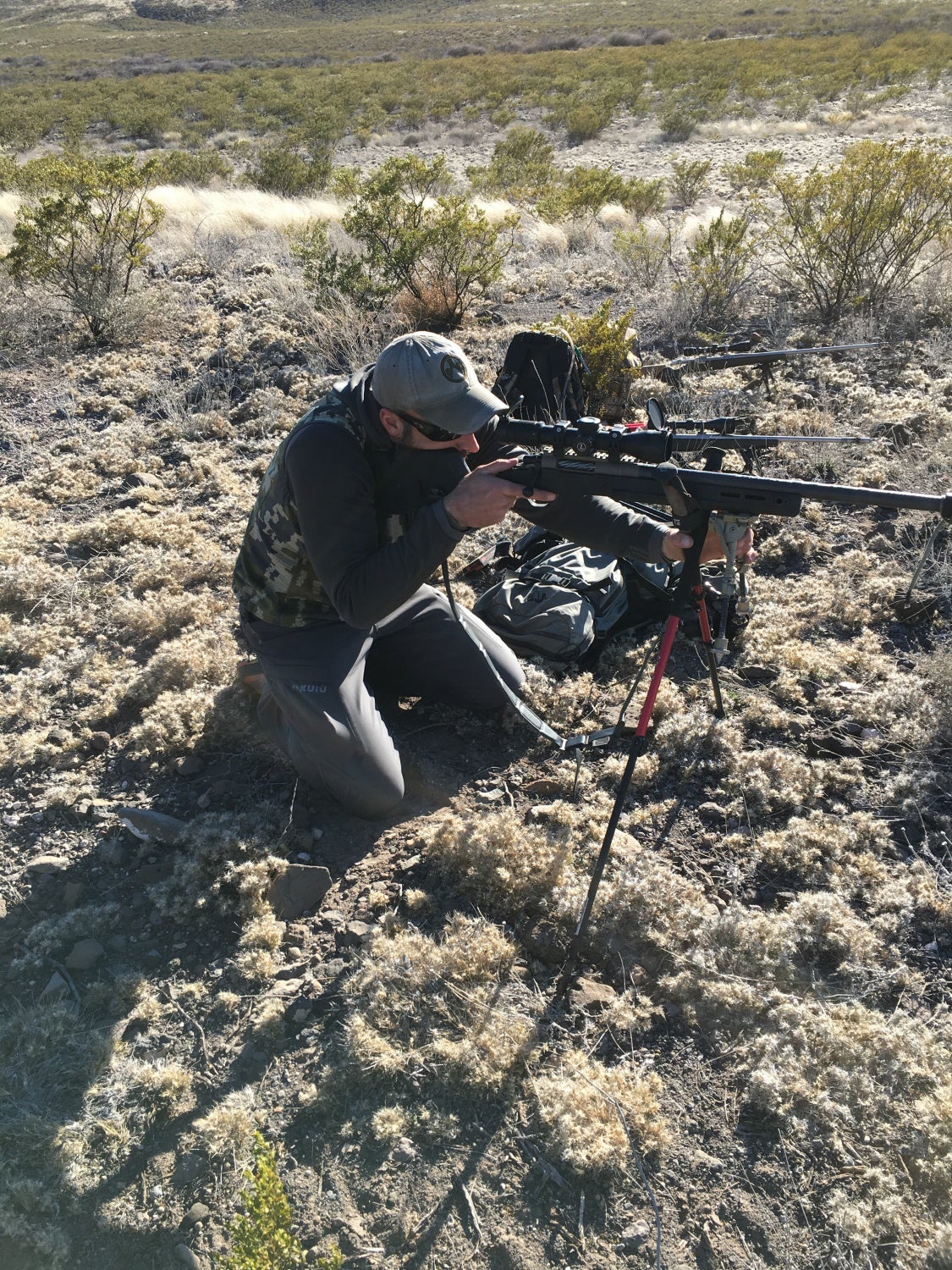
Caylen demonstrating a stick supported sitting technique.
The one component of the fundamentals that was heavily emphasized for the duration of the course was finding your natural point of aim, the key to stability and consistency. One under-looked component of establishing a good natural point of aim is making sure you have a proper cheek weld, and are not straining your neck muscles.
Overall, I came away from the Precision Hunter Course confident in my ability to take game much farther than I could say previously. I have gained knowledge and a methodology that I can apply to future rifle setups as well. Additionally, I now have an extensive shopping list which will probably take me years to complete, starting with a new optic. If you ever have the opportunity, I highly recommend the Precision Hunter Course by Magpul. The course fee was $1500, which includes food, lodging, and instruction for four days, which is reasonable for professional shooting instruction of this caliber.
If you are a hunter and want to make the most of your setup, or want long-range shooting instruction designed for everyday people, the Precision Hunter Course was designed for you. This class is not offered all year round, so be on the lookout for this class as well as others at Magpul Core’s website. Any one of them would be a great investment in your skill set, and Caylen Wojcik is an extremely accomplished and approachable instructor.
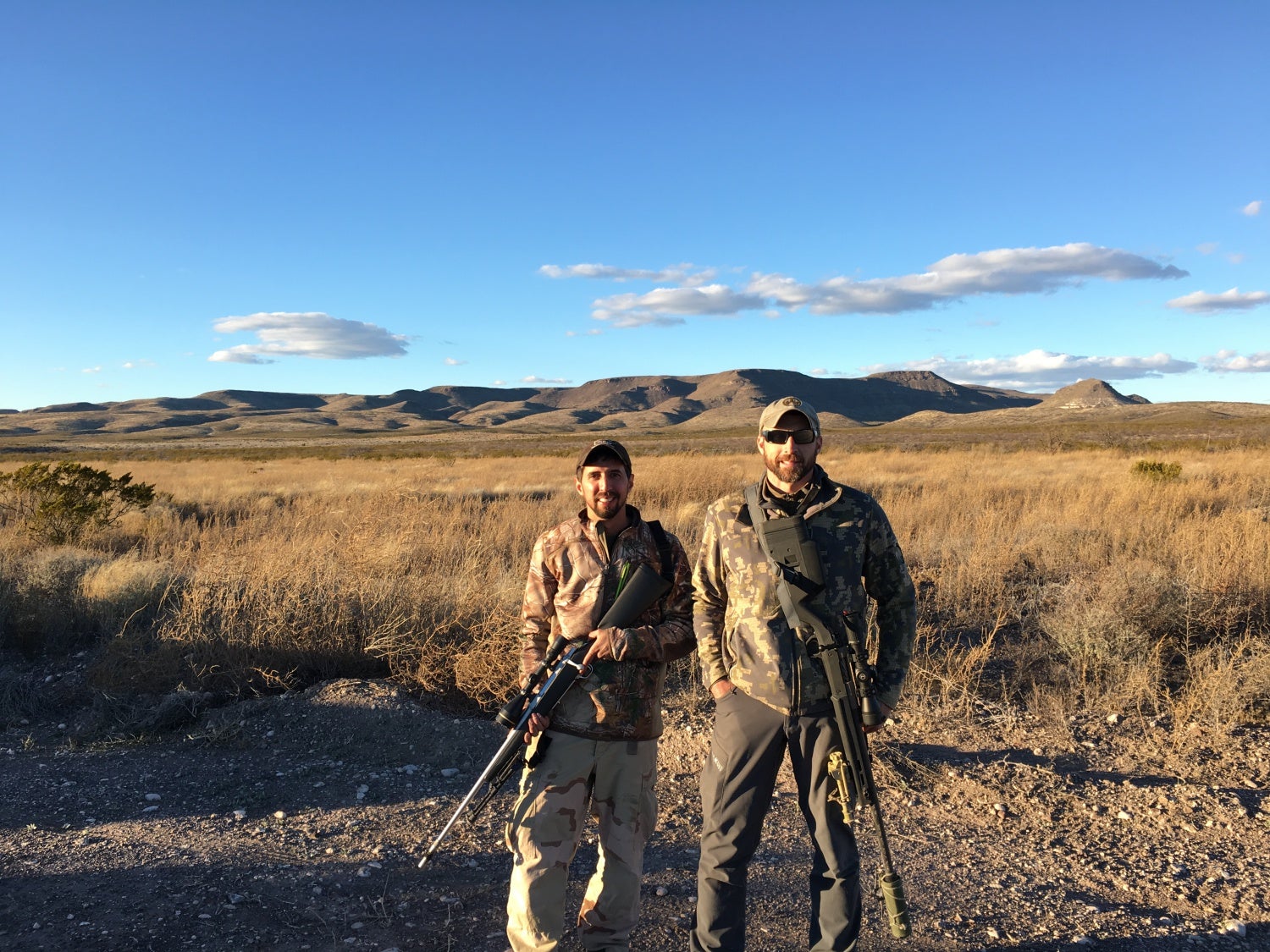
The author posing for a shot with Caylen.
 Your Privacy Choices
Your Privacy Choices
